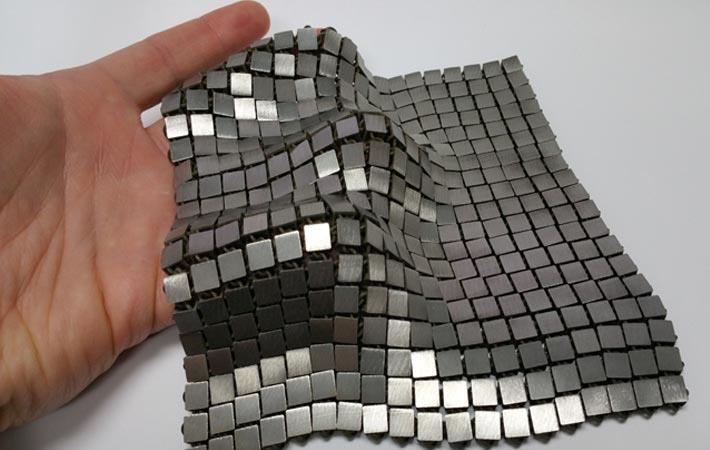NASA designing advanced woven metal fabrics for space

Another potential use might be for an icy moon like Jupiter's Europa, where these fabrics could insulate the spacecraft, according to NASA. At the same time, this flexible material could fold over uneven terrain, creating ‘feet’ that won't melt the ice under them.
These fabrics are being designed by a team led by Polit Casillas, a systems engineer at NASA's Jet Propulsion Laboratory in Pasadena, California. The team has already created prototypes which look like chain mail, with small silver squares strung together. But these fabrics were not sewn by hand. They were ‘printed’, created in one piece with advanced technologies.
A technique called additive manufacturing, known as 3-D printing on an industrial scale, is necessary to make such fabrics. Unlike traditional manufacturing techniques, in which parts are welded together, additive manufacturing deposits material in layers to build up the desired object. This reduces the cost and increases the ability to create unique materials, NASA said.
"We call it '4-D printing' because we can print both the geometry and the function of these materials. If 20th century manufacturing was driven by mass production, then this is the mass production of functions," said Casillas.
Fabricating spacecraft designs can be complex and costly, said Andrew Shapiro-Scharlotta of JPL. Adding multiple functions to a material at different stages of development could make the whole process cheaper and also open the door to new designs. "We are just scratching the surface of what's possible. The use of organic and non-linear shapes at no additional costs to fabrication will lead to more efficient mechanical designs," Shapiro-Scharlotta said.
The space fabrics have four essential functions – reflectivity, passive heat management, foldability and tensile strength. One side of the fabric reflects light, while the other absorbs it, acting as a means of thermal control. It can fold in many different ways and adapt to shapes while still being able to sustain the force of pulling on it.
The JPL team wants to try these fabrics in space and also wants to be able to manufacture them in space.
Casillas is also associated with a workshop that does rapid prototyping of advanced concepts and systems. One of the technologies which the team is working on is 4-D printing. In the distant future, astronauts might be able to print materials as they are needed and even recycle old materials, Casillas said and added conservation is critical in space. (SV)
Fibre2Fashion News Desk – India
































-Ltd..jpg?tr=w-120,h-60,c-at_max,cm-pad_resize,bg-ffffff)





.jpg?tr=w-120,h-60,c-at_max,cm-pad_resize,bg-ffffff)
.jpg?tr=w-120,h-60,c-at_max,cm-pad_resize,bg-ffffff)






